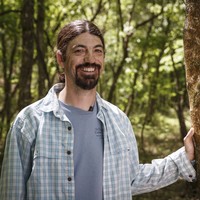Bryan Piazza
The Nature Conservancy, Louisiana Field Office, Department Member
- I am the director of freshwater and marine science at The Nature Conservancy. I am a wetland ecologist and work in Baton Rouge, Louisiana.edit
Coastal protection remains a global priority as rising sea levels, development, and tropical storms threaten coastal habitat. A common tool used to combat shoreline erosion involves armoring the land/water interface (yohe and Neumann,... more
Coastal protection remains a global priority as rising sea levels, development, and tropical storms threaten coastal habitat. A common tool used to combat shoreline erosion involves armoring the land/water interface (yohe and Neumann, 1997; Mimura and Nunn, 1998; Klein et al., 2001). while typical armoring is done with heavy, often non-native materials, recent shoreline protection projects are moving towards promoting the use of native, living materials. One promising method that has been used to restore degraded reef systems and protect shorelines in southeast Asia, is mineral accretion technology which involves the electrochemical deposition of minerals from seawater (hilbertz, 1979; hilbertz and goreau, 1996; Sabater and yap, 2002, 2004). Essentially, the method involves creating reef units consisting of a rebar structure and passing a weak electrical current through the structure. These artificial reef units use low-voltage direct current that, in the right conditions, results i...
Research Interests:
Research Interests:
Research Interests:
Research Interests:
Research Interests:
For more than five centuries, the Atchafalaya River Basin has captured the flow of the Mississippi River, becoming the Big River's main distributary as it reaches the Gulf of Mexico in south Louisiana. This dynamic environment,... more
For more than five centuries, the Atchafalaya River Basin has captured the flow of the Mississippi River, becoming the Big River's main distributary as it reaches the Gulf of Mexico in south Louisiana. This dynamic environment, comprising almost a million acres of the lower Mississippi Alluvial Valley and Mississippi River Deltaic Plain, is perhaps best known for its expansive swamp environments dominated by baldcypress, water tupelo, and alligators. But the Atchafalaya River Basin contains a wide range of habitats and one of the highest levels of biodiversity on the North American continent. Piazza has compiled and synthesized the body of scientific knowledge for the Atchafalaya River Basin, documenting the ecological state of the basin and providing a baseline of understanding that provides a crucial resource for future planning. He evaluates some common themes that have emerged from the research and identifies important scientific questions that remain unexplored. As threats ...
